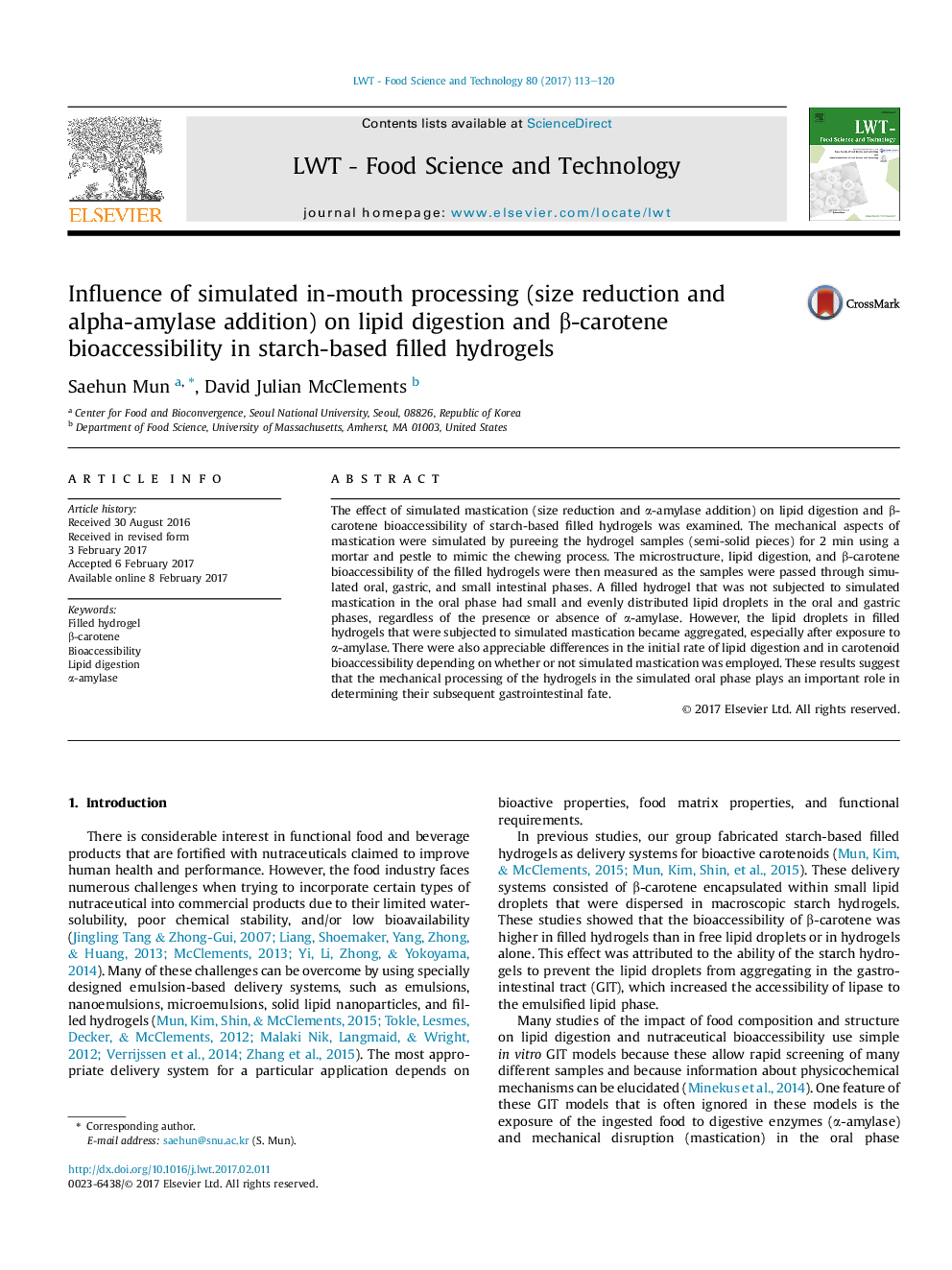| کد مقاله | کد نشریه | سال انتشار | مقاله انگلیسی | نسخه تمام متن |
|---|---|---|---|---|
| 5768527 | 1628518 | 2017 | 8 صفحه PDF | دانلود رایگان |

- Filled hydrogels (FH) were subjected to simulated mastication in the oral phase.
- Mechanical and α-amylase disruption in mouth alters the structure of filled hydrogel.
- Bioaccessibility of β-carotene in FH was dependent on the degree of chewing.
- Bioaccessibility was affected by difference in the degree of amylase reaction.
The effect of simulated mastication (size reduction and α-amylase addition) on lipid digestion and β-carotene bioaccessibility of starch-based filled hydrogels was examined. The mechanical aspects of mastication were simulated by pureeing the hydrogel samples (semi-solid pieces) for 2 min using a mortar and pestle to mimic the chewing process. The microstructure, lipid digestion, and β-carotene bioaccessibility of the filled hydrogels were then measured as the samples were passed through simulated oral, gastric, and small intestinal phases. A filled hydrogel that was not subjected to simulated mastication in the oral phase had small and evenly distributed lipid droplets in the oral and gastric phases, regardless of the presence or absence of α-amylase. However, the lipid droplets in filled hydrogels that were subjected to simulated mastication became aggregated, especially after exposure to α-amylase. There were also appreciable differences in the initial rate of lipid digestion and in carotenoid bioaccessibility depending on whether or not simulated mastication was employed. These results suggest that the mechanical processing of the hydrogels in the simulated oral phase plays an important role in determining their subsequent gastrointestinal fate.
Journal: LWT - Food Science and Technology - Volume 80, July 2017, Pages 113-120